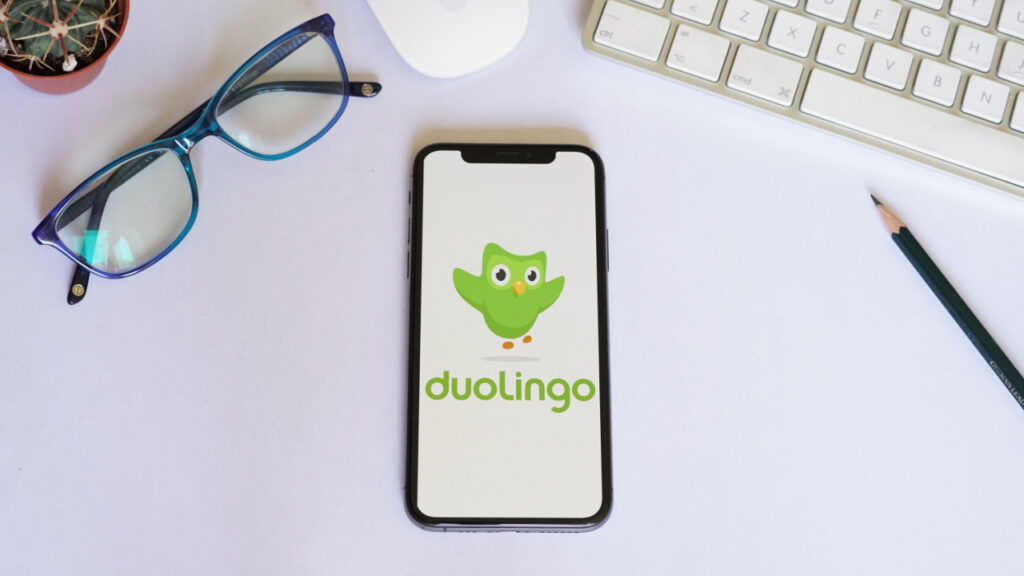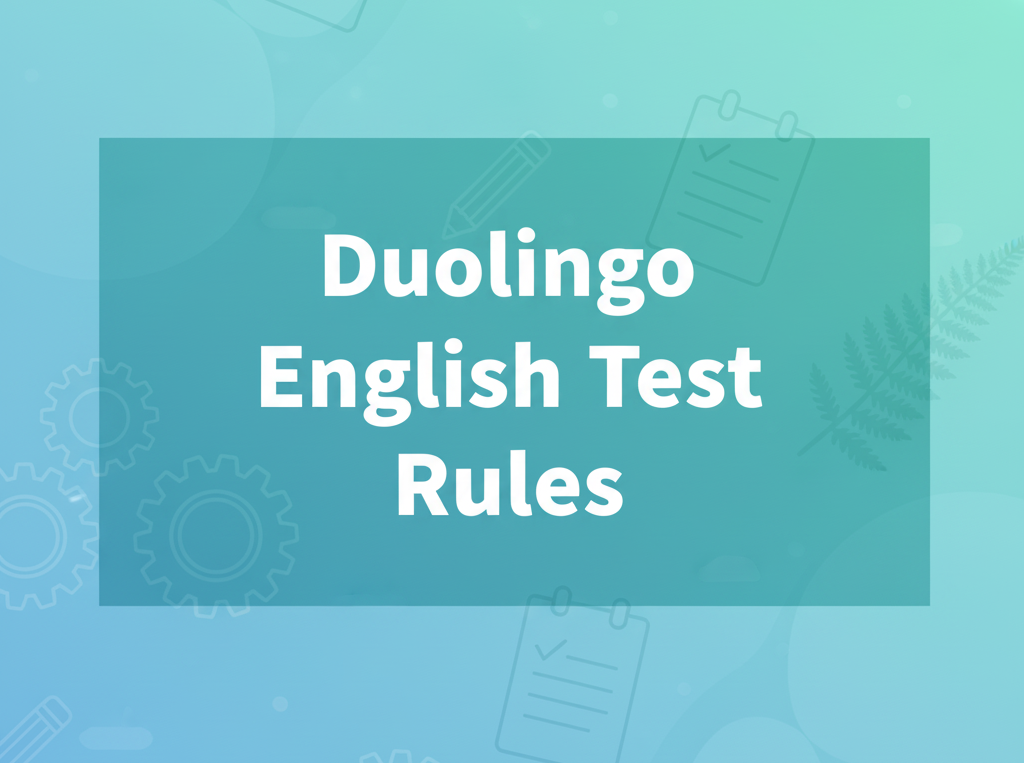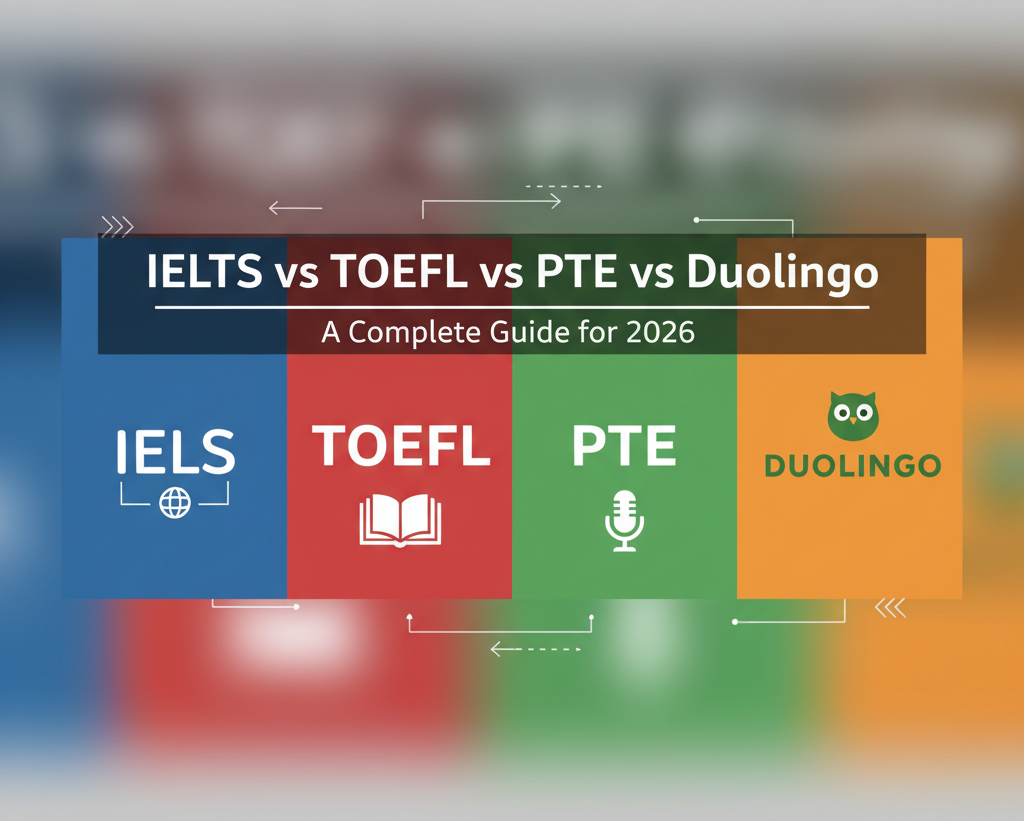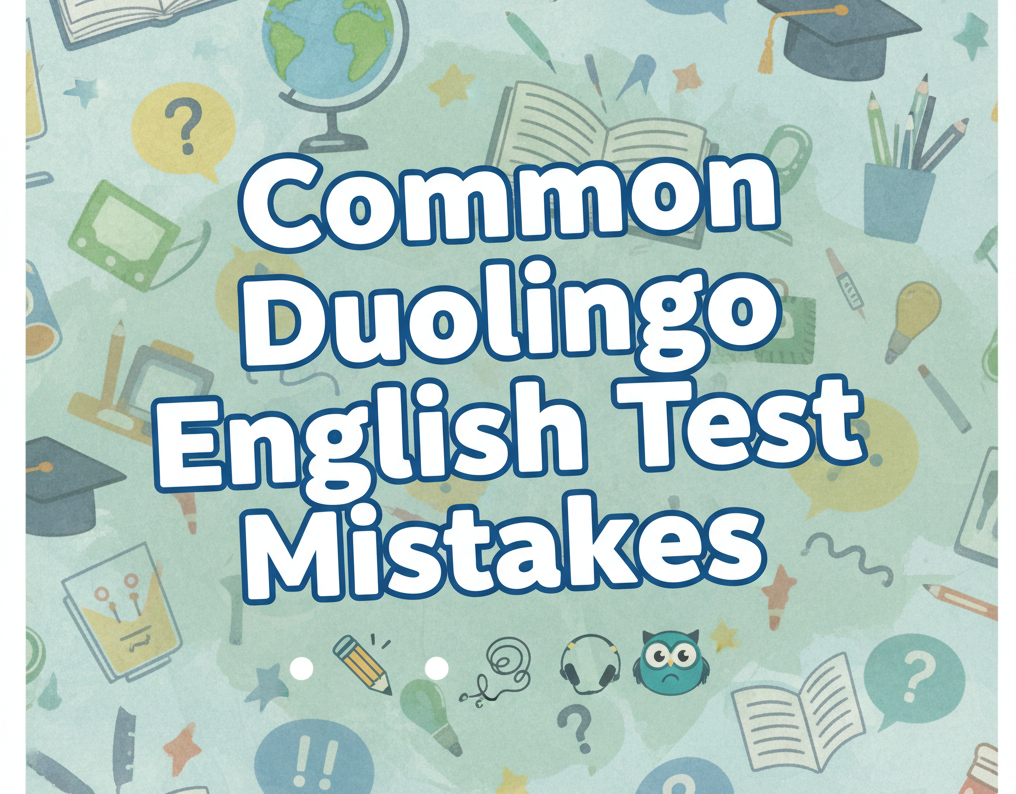Have you ever looked at a picture during a language exam and found yourself stuck using the same basic words like “big,” “nice,” or “beautiful”? If so, it’s time to upgrade your vocabulary! Strong descriptive language can make all the difference when answering picture description tasks in the Duolingo English Test.
Learning advanced vocabulary for picture description will help you sound more fluent, boost your scores, and impress examiners. In this guide, we’ll break down essential words and phrases, so you can elevate your responses with confidence. Let’s get started!
Why Advanced Vocabulary Matters for Picture Descriptions
Using advanced vocabulary in picture descriptions enhances clarity, precision, and overall fluency. It helps test-takers convey details effectively while demonstrating a strong command of English.
Importance of Vocabulary in Speaking and Writing Tasks
Choose your dream country
When do you want to study abroad?
What's your highest level of education?
Select you current city
How Leap will help you
Personalised University Shortlist
Express Applications with Quicker Admits
End-to-End Application Support
Effective picture descriptions rely on precise vocabulary to convey detailed observations. In exams like the Duolingo English Test (DET), IELTS, and TOEFL, using sophisticated words for describing photos enhances clarity and fluency. Strong vocabulary enables test-takers to express nuances in color, mood, spatial relationships, and actions, making responses more engaging.
Why DET, IELTS, and TOEFL Reward Descriptive Language
Examiners assess fluency, coherence, and lexical resource in speaking and writing tasks. Responses using high-scoring picture description words score higher as they demonstrate a strong command of the language. Instead of basic terms like "blue sky" or "happy person," candidates who use advanced vocabulary for picture description stand out.
Impact of Precise Language on Fluency and Scoring
A rich vocabulary improves fluency by reducing hesitations and vague descriptions. Test-takers who incorporate picture description synonyms advanced avoid repetition, enhancing their responses. Additionally, vocabulary to describe images in exams provides depth and clarity, leading to higher scores.
Key Vocabulary Categories for Picture Descriptions
To describe images effectively, focus on key vocabulary categories such as people, actions, emotions, settings, and artistic elements. Mastering these groups ensures well-rounded and detailed responses.
Advanced vocabulary helps create vivid descriptions. Below are key categories with sample words and usage examples.
Describing Colors & Tones with Precision
| Basic Word | Advanced Synonym |
|---|---|
| Red | Crimson, Scarlet |
| Blue | Azure, Cobalt |
| Green | Emerald, Olive |
| Yellow | Golden, Amber |
| Black | Ebony, Charcoal |
Example Sentence: The vibrant crimson sunset cast a warm glow over the landscape.
Location & Spatial Relationships
| Basic Word | Advanced Synonym |
|---|---|
| Front | Foreground |
| Back | Background |
| Next to | Adjacent |
| Above | Overhead |
| Below | Beneath |
Example Sentence: In the foreground, a child is playing with a toy, while the parents chat in the background.
Mood & Atmosphere: Conveying Emotion
| Basic Word | Advanced Synonym |
|---|---|
| Happy | Jubilant, Elated |
| Sad | Somber, Melancholy |
| Busy | Bustling, Lively |
| Calm | Serene, Tranquil |
| Scary | Ominous, Eerie |
Example Sentence: The atmosphere is tranquil, with gentle waves lapping against the shore.
Describing Texture & Surface Quality
| Basic Word | Advanced Synonym |
|---|---|
| Rough | Coarse, Gritty |
| Smooth | Sleek, Polished |
| Soft | Plush, Velvety |
| Hard | Stiff, Rigid |
| Shiny | Glossy, Lustrous |
Example Sentence: The rough texture of the tree bark contrasts with the smooth leaves.
Action & Movement: Dynamic Verbs
| Basic Word | Advanced Synonym |
|---|---|
| Walking | Strolling, Striding |
| Talking | Conversing, Engaging |
| Sitting | Reclining, Perched |
| Looking | Gazing, Observing |
| Holding | Clutching, Grasping |
Example Sentence: The children are animatedly conversing near the playground.
Synonyms for Common Picture Description Words
Avoid repetitive language by using synonyms for frequently used words like "beautiful," "happy," or "crowded." Expanding your vocabulary adds variety and sophistication to your descriptions.
A strong vocabulary prevents repetition. Below are synonyms for commonly used words:
| Basic Word | Advanced Synonym |
|---|---|
| Good | Excellent, Superior |
| Bad | Terrible, Unfavorable |
| Happy | Joyful, Jubilant |
| Small | Tiny, Compact |
| Big | Enormous, Vast |
| Interesting | Engaging, Intriguing |
Frameworks & Phrases to Structure Picture Descriptions
A well-structured description follows a logical flow—starting with an introduction, key details, and ending with interpretation. Using pre-defined phrases can help organise your response smoothly.
5Ws + 1H (Who, What, Where, When, Why, How)
This method ensures a well-structured response:
- Who is in the picture?
- What are they doing?
- Where is the scene set?
- When is it happening?
- Why might this scene be taking place?
- How do the elements interact?
Starting Phrases for Photo Descriptions
- "The image portrays…"
- "This picture seems to illustrate…"
- "In the upper-right corner, one can see…"
Speculative Phrases for Describing Unclear Elements
- "It appears that…"
- "It is likely that…"
- "The individuals seem to be engaged in…"
Common Mistakes to Avoid in Picture Descriptions
Many test-takers make errors such as listing objects without context, using vague language, or misinterpreting the image. Avoiding these mistakes ensures a more accurate and high-scoring response.
Relying on Basic Words
Using basic terms like "nice" or "good" limits the impact of your description. Instead, opt for high-scoring picture description words.
Ignoring Background/Secondary Elements
A good response describes both the foreground and background, ensuring a complete depiction of the scene.
Over-Explaining Actions or Guessing the Context
Avoid making assumptions about unseen aspects. Stick to observable details to remain accurate.
How to Incorporate Advanced Vocabulary for 120+ Scores
To score 120+ on the Duolingo test, use precise, high-level vocabulary that accurately describes the image. Incorporating descriptive adjectives, adverbs, and varied sentence structures is key.
Time Management: Planning and Structuring Responses
- Spend 5–10 seconds analysing the picture before describing it.
- Begin with a general overview, then focus on details.
Using Vocabulary Naturally
- Avoid forced complexity; choose words that fit the context.
- Use duolingo english test picture vocabulary effectively.
Sample Picture Prompts with High-Scoring Responses
Analysing high-scoring responses helps you understand what makes a description effective. Practicing with sample prompts allows you to refine your vocabulary and structuring techniques.
Prompt: "Describe a crowded marketplace with people interacting."
Model Response: In the foreground, vendors are actively engaging with customers while displaying vibrant produce and handcrafted items. The atmosphere is bustling, with lively conversations echoing throughout the marketplace.
Advanced Vocabulary for Art & Aesthetic Analysis
Describing artistic elements in images requires a strong grasp of terms related to colors, textures, composition, and mood. Mastering these words enhances your ability to analyse images critically.
Artistic Elements
- Composition
- Symmetry
- Perspective
Media Types
- Oil painting
- Acrylic
- Digital illustration
Describing Art Styles
- Realism
- Impressionism
- Surrealism
Expressing Uncertainty in Picture Descriptions
When unsure about certain details in an image, use phrases like “It appears that…” or “It seems like…” to demonstrate awareness while maintaining fluency and coherence.
Use these phrases to avoid over-speculation:
- "Perhaps the scene depicts…"
- "It is not entirely clear, but…"
Tips to Boost Your Picture Description Score
Consistent practice, exposure to diverse images, and using a mix of advanced vocabulary and structured responses can significantly improve your performance in this task. Here are few pointers to keep in mind.
- Review vocabulary flashcards before practice.
- Record responses and analyse with AI tools.
- Simulate exam conditions for real-time practice.
- Use real images to enhance vocabulary retention.
Final Thoughts
By mastering advanced vocabulary for picture description, you can significantly boost your scores in Duolingo, IELTS, and TOEFL. Keep practicing with real-world images and expand your lexical range to make your descriptions more vivid and compelling.
Ready to test your skills? Try our free Duolingo practice test now!
Frequently Asked Questions
-
Q. How can I improve my vocabulary for picture descriptions?
Ans. Expanding your advanced vocabulary for picture description involves learning descriptive adjectives, action verbs, and spatial prepositions. Read captions from news articles and travel blogs, and practice using sophisticated words for describing photos. Using Duolingo English Test picture vocabulary lists and flashcards can also help.
-
Q. What is the best way to describe emotions and actions in a photo?
Ans. Use high-scoring picture description words to describe facial expressions, body language, and actions. Instead of saying “The boy looks happy,” try “The boy beams with delight as he eagerly unwraps a present.” Using words to describe mood in a picture, such as serene, jubilant, or contemplative, enhances your response.
-
Q. Can I use personal opinions when describing a picture?
Ans. In exams like the Duolingo English Test, focus on objective descriptions rather than personal opinions. However, if the prompt allows interpretation, you can add phrases like “It appears that…” or “The image suggests…” while maintaining a neutral, well-structured response.
-
Q. How do I describe people in a photo effectively?
Ans. Use detailed physical and emotional descriptions. Instead of “A man is standing”, say “A tall, middle-aged man with a confident stance is adjusting his tie, appearing deep in thought.” Adding vocabulary to describe images in exams enhances fluency and complexity.
-
Q. How do I describe the setting of a picture?
Ans. Use precise Duolingo English Test picture vocabulary to set the scene. Instead of “The picture is in a park”, say “The serene park, with its lush greenery and winding pathways, exudes tranquility.” Adding sensory details like sounds and textures improves engagement.
-
Q. How do I talk about interactions between people in a photo?
Ans. Describe body language, facial expressions, and gestures. For example, “The two individuals are engaged in an animated discussion, their expressive hand movements emphasising their lively exchange.” Using high-scoring picture description words makes your response stand out.
-
Q. Can I use idioms or figurative language?
Ans. Yes, but use them appropriately. Instead of “The man looks tired,” you can say “The man appears exhausted, as if he’s carrying the weight of the world on his shoulders.” However, avoid overly complex phrases that may confuse the examiner.
-
Q. How do I describe colors and lighting in a sophisticated way?
Ans. Instead of saying “The sky is blue”, try “The sky boasts a soft azure hue, dotted with wispy, golden clouds.” Use sophisticated words for describing photos, like illuminated, dimly lit, radiant, or subdued, to add depth to your description.
-
Q. How do I describe emotions without assuming too much?
Ans. Use objective observations instead of personal interpretations. Instead of “The woman looks sad”, say “The woman gazes downward, her furrowed brows and tense posture suggesting contemplation.” This technique aligns with describing photos with advanced vocabulary.
-
Q. How can I describe movement in a photo?
Ans. Use dynamic verbs instead of static ones. Instead of “The children are running”, say “The children dash across the vibrant playground, their laughter echoing in the air.” Using vocabulary for Duolingo picture description related to motion creates vivid imagery.
-
Q. How do I describe objects in a picture without sounding repetitive?
Ans. Use varied descriptors. Instead of repeatedly saying “There is a table”, say “A sturdy wooden table, adorned with an elegant white cloth, stands in the center of the room.” Vocabulary to describe images in exams should focus on textures, colors, and function.
















Have Questions? Get Guidance to reach your Dream University
Connect with India's finest counsellors and biggest study abroad community.
Get Guidance